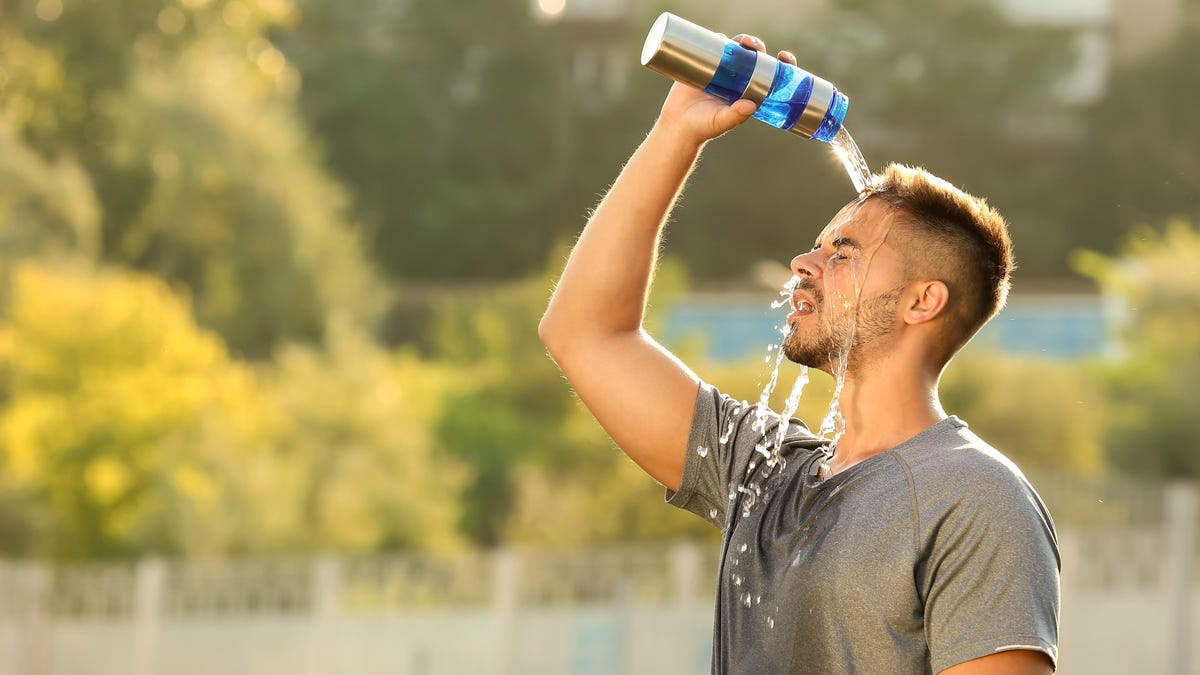When it’s hot, you can often still exercise safely—check out our recommendations here—but our bodies have their limits. There really are temperatures and conditions that make it dangerous to exercise for very long. Here are some guidelines for figuring out when to call off your outdoor workout.
Most importantly, it’s not just about the temperature. Humidity matters, too. We’ll see below how to use the wet bulb globe temperature to tell when it is truly “too hot” to work out. But to give a few examples, if you’re trying to avoid wet bulb temperatures above 82 (a common recommendation), these scenarios would all be “too hot” for a long or intense run:
- 80 degrees would be too hot at 70% humidity
- 90 degrees would be too hot at 30% humidity
- 100 degrees would be too hot at 10% humidity
If you’re used to the heat, you can stand to work out at higher temperatures, as we’ll see. But let’s look first at what “wet bulb” temperature even means.
How to use the wet bulb globe temperature
Instead of just checking the temperature that is forecast for the day, the best way to figure out how the heat will affect your body is to look at a metric called wet bulb globe temperature, or WBGT. The wet bulb globe temperature comes from the idea that if you wrap the bulb of an old-fashioned thermometer in wet fabric, the thermometer will then give a reading that tells you how much the air can cool you down. (I’m simplifying; the actual process is more complicated and involves three thermometers.)
This is important because one of our body’s main cooling mechanisms—sweating—can’t work well when the humidity is high. Fortunately, you don’t need a thermometer and a wet cloth: You can approximate it by looking up the temperature and humidity on a chart, or you can use a weather app like Carrot Weather or WeatherFX (iPhone, Android) that reports it directly.
Adjust your training based on the temperature
Now that you have the WBGT, you need to decide what to do about it. U.S. Soccer has a map that divides the country into three regions, with different cutoffs for canceling practice in different areas. (If you live in Texas, they assume you can deal with a bit more heat than if you live in Minnesota.) Similarly, here are guidelines meant for organizers of road races (like marathons). If the WBGT is over 82 degrees, the race should be canceled. Above 73, “extreme caution and slower pace” are strongly recommended.
To give an idea of what that might look like: a WBGT of 82 degrees can happen in 75-degree weather with 90% humidity, 84-degree weather with 50% humidity, or 100-degree weather with 10% humidity.
For a general set of recommendations, here’s what the American College of Sports Medicine recommends for people who are not acclimated to working out in the heat:
- If the WBGT is above 65 degrees Fahrenheit, take extra rests and pay attention to your hydration.
- If the WBGT is above 72, take extra rests and limit the duration of your exercise.
- If the WBGT is above 78, take extra rests, limit duration, and also tone down the intensity (for example, don’t try to run as fast.)
- If the WBGT is above 82, you should be resting as much as you’re working, doing all of the above and keeping a sharp eye out for signs of heat illness, because the risk here is high.
- If the WBGT is above 86, pack it in and go home.
For people who are acclimatized to the heat, meaning that they have been safely exercising in the heat for at least several weeks, the safety guidelines can be relaxed a bit since your body has learned how to cool itself a little better. In those cases, the cutoffs look like this:
- If the WBGT is above 72, you can still exercise as normal, but pay extra attention to your hydration.
- If the WBGT is above 82, “plan intense or prolonged exercise with discretion” and keep an eye out for signs of heat illness in people who are at high risk.
- If the WBGT is above 86, limit intense exercise and limit your exposure to the hot weather. Watch out for signs of heat illness.
- If the WBGT is above 90, the risk is too great for even acclimatized athletes.
All of this advice goes alongside the usual precautions. Bring extra fluids and electrolytes for your hydration breaks, and make sure to find places in the shade to cool off. (A kiddie pool with a bag of ice is one of the suggestions in the U.S. Soccer guidelines.)
It’s also important to know the signs and symptoms of heat exhaustion and heatstroke, and what to do if you observe them in yourself, or your teammate or workout buddy. Heatstroke is a 911-level emergency, so get help if needed.

